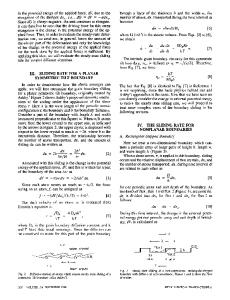Grain boundary diffusion mechanisms in metals
- PDF / 4,325,043 Bytes
- 27 Pages / 597.28 x 785 pts Page_size
- 46 Downloads / 358 Views
Grain Boundary Diffusion Mechanisms in Metals
R.W. BALLUFFI R.F. Mehl Medalist
In recent years it has become well established that fast diffusion along grain boundaries plays a key role in many important metallurgical processes including cases where net mass is transported along boundaries which act as sources and/or sinks for the fluxes of atoms. In addition, considerable advances have been made in understanding grain boundary structure, and new techniques have become available for studying kinetic phenomena in grain boundaries. This lecture will attempt to review our current knowledge of the atomistic mechanisms responsible for these grain boundary diffusion phenomena. Relevant aspects of the structure of grain boundaries and the point and line defects which may exist in grain boundaries are described first. The important experimental observations are then discussed. Diffusion models are then taken up, and it is concluded that the atomic migration occurs by a point defect exchange mechanism which, in at least the vast majority of boundaries in simple metals, most likely involves grain boundary vacancies. The grain boundary sources, and/or sinks required to support divergences in the atomic (vacancy) fluxes are grain boundary dislocations. Phenomena therefore occur which resemble'the Kirkendall Effect in the bulk lattice in certain respects. Additional topics are discussed which include effects of boundary structure on boundary diffusion and the question of whether or not boundary diffusion is faster along migrating than stationary boundaries.
The Institute of Metals Lecture was established in 1921, at which time the Institute of Metals Division was the only professional Division within the American Institute of Mining and Metallurgical Engineers. It has been given annually since 1922 by distinguished men from this country and abroad. Beginning in 1973 and thereafter, the person selected to deliver the lecture will be known as the "'Institute of Metals Division Lecturer and R.F. Mehl Medalist" for that year. ROBERT WEIERTER BALLUFFI is Professor of Physical Metallurgy in the Department of Materials Science and Engineering, Massachusetts Institute of Technology, Cambridge, MA. Dr. Balluffi enrolled at MIT in 1941, was in the United States Army from 1943 to 1946 and returned to MIT to earn his B.S. in 1947 and his Sc. D. in 1950. From 1950 to
METALLURGICAL TRANSACTIONS B
1954 he was Senior Research Engineer at Sylvania Electric Company Research Laboratory, Bayside, NY. He was Assistant Professor of Physical Metallurgy and Associate Professor and Professor, Department of Mining, Metallurgy and Petroleum Engineering, University of Illinois from 1954 to 1964. At ComelI University from 1964 to 1978, Dr. Balluffi was Francis Norwood Bard Professor in the Department of Materials Science and Engineering, and became Head of the Department in 1974. Dr. Balluffi is a Fellow of both the American Physical Society and TMS and is a Member of the Institute of Metals and Sigma Xi. He is consultant to Oak Ridge National Laborat
Data Loading...











